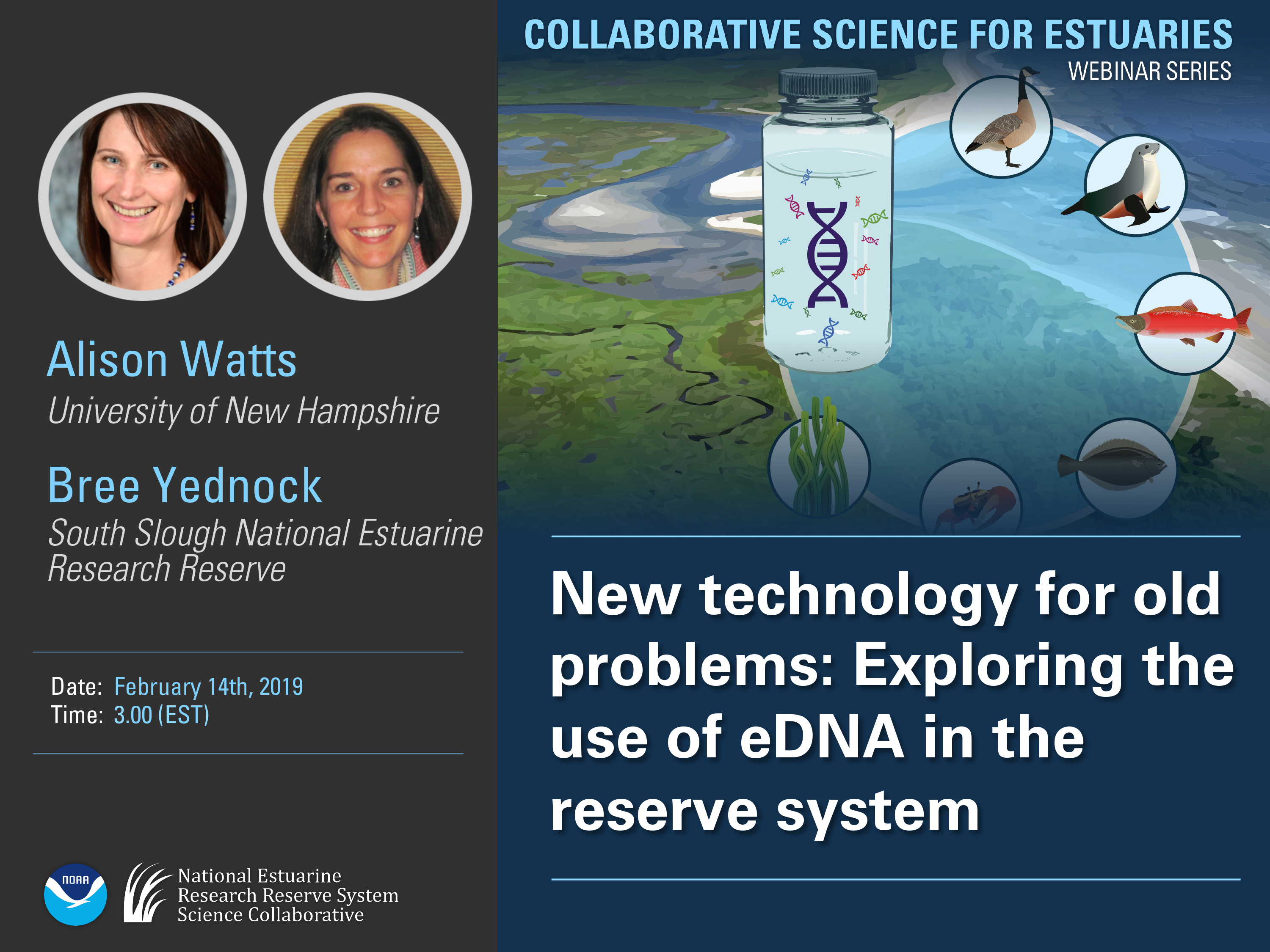 Webinar Description
Webinar Description
Environmental DNA (eDNA), or DNA present in an environmental sample, is emerging as a powerful tool to detect species present in an ecosystem without having to actually capture and identify individual organisms. Fish, invertebrates, and other animals shed DNA, through fragments of tissue and reproductive and waste products, into the environment in which they live. Alison and Bree presented initial results from a pilot eDNA monitoring program being developed and tested at several National Estuarine Research Reserve (NERR) sites in New England and Oregon. Sampling was conducted in coordination with traditional monitoring programs to validate species identification and detection limits.
This webinar was an opportunity for the research team to engage reserves considering eDNA monitoring, and compare notes with other researchers and natural resource managers using eDNA approaches.
These slides summarize a webinar given byAlison Watts of the University of New Hampshire and Bree Yednock of the South Slough Reserve on February 14, 2019, featuring results from a pilot eDNA monitoring program being developed and tested at several National Estuarine Research Reserve (NERR) sites in New England and Oregon.